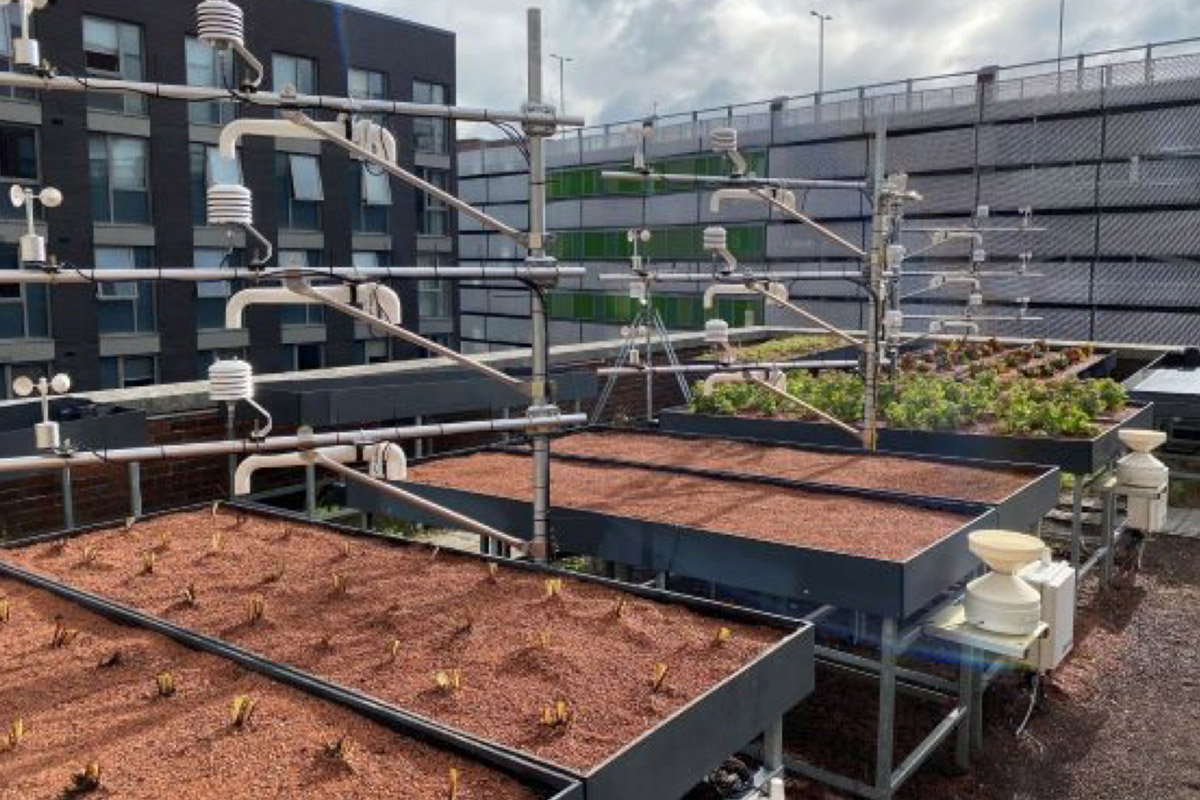This project explores 3 experimental methods to infer and quantify evapotranspiration (ET) from a set of green roof test beds, each with a varied vegetation/substrate combination. The aim of the project is to find suitable techniques that can be reproduced to measure ET in a SuDS (Sustainable Drainage Systems) context within urbanised areas.
The project sits within the wider goal of attempting to quantify the urban energy flux. In order to quantify ET, portable techniques are being explored that can make roaming field observations. There is a phase transition from liquid to gas when green surfaces undergo evapotranspiration with an associated latent heat flux. This project aims to quantify this latent heat flux using the aerodynamic method. Latent heat flux and in-turn ET is quantified as a residual of the total energy budget of a green roof system. ET will also be estimated from each green roof test bed using lysimetry and porometry. Lysimetry monitors moisture fluxes within the green roof system to estimate ET. The porometry method directly measures leaf stomatal conductance and modelling techniques are used to infer ET from these raw measurements. The green roof test beds are instrumented with an array of climatic and hydrological sensors in order to monitor changes in ET using each of the three methods.
PhD Candidate: Hamza Askari
Supervisory Team: Hamza Askari, Virginia Stovin, Abigail Hathway
Project Status: Ongoing
Project Start Date: 1st October 2018
Keywords: Evapotranspiration, SuDS, Green Roofs, Moisture Flux, Energy Flux, UHI, Flood Risk, Stormwater Management

